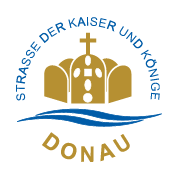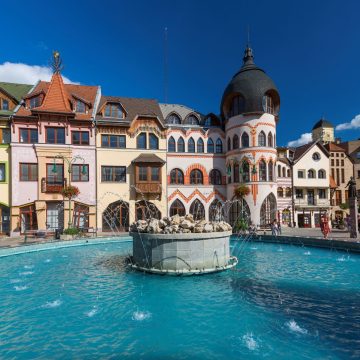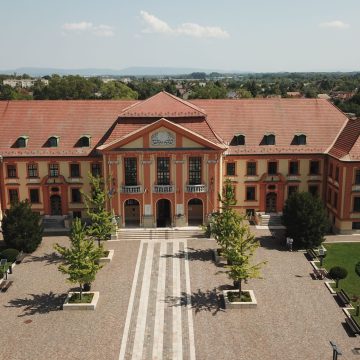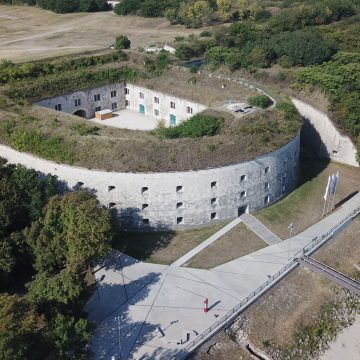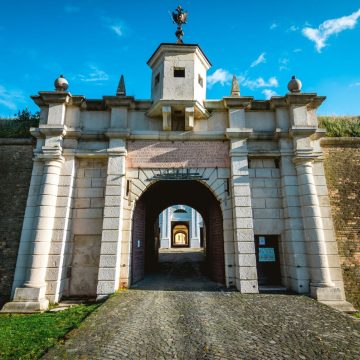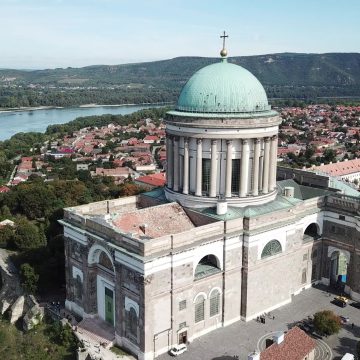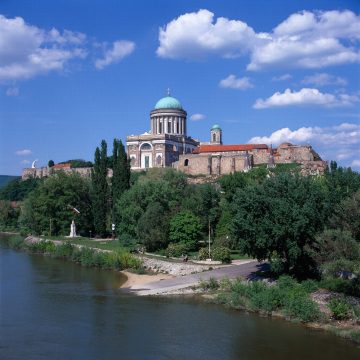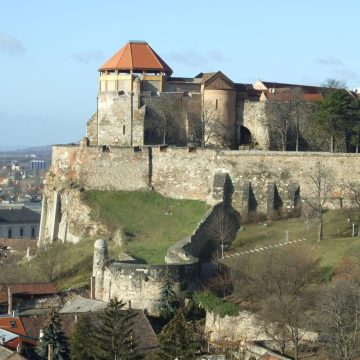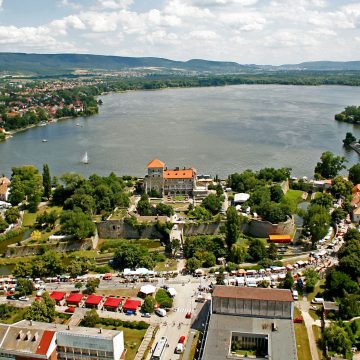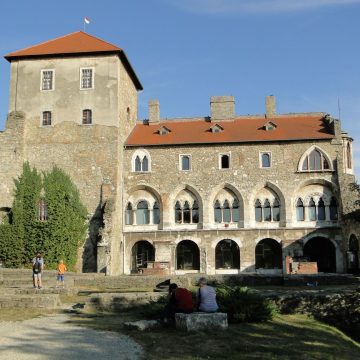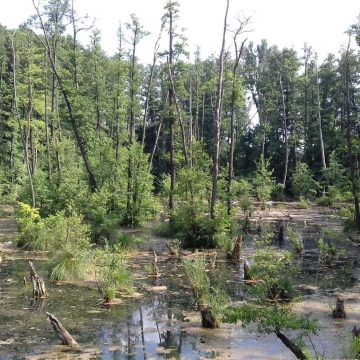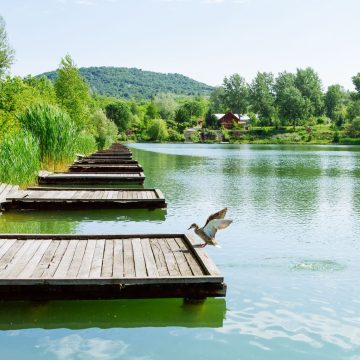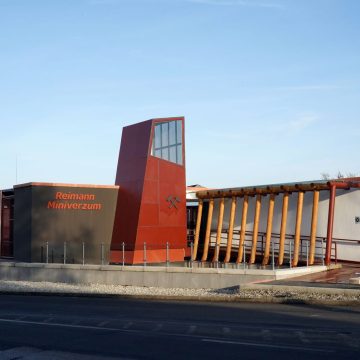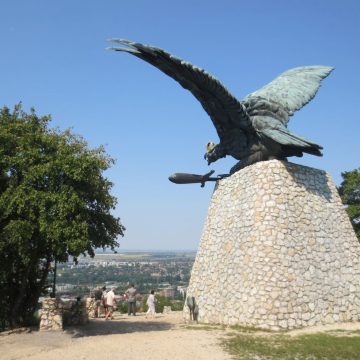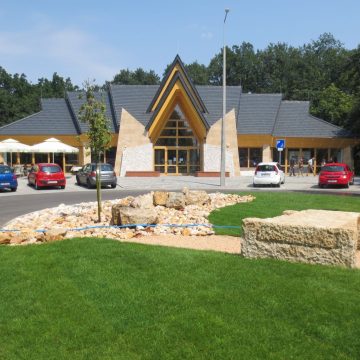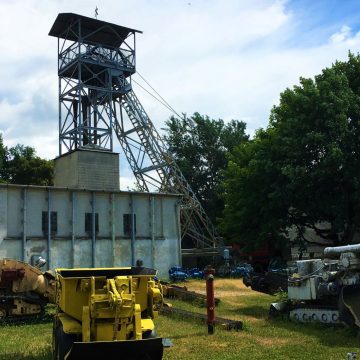Danube Country Region Hungary & Slovakia
Komárom (Hungary) / Komárno (Slovakia)
Komárom and Komárno have a common history on the two banks of the Danube. After the First World War, in accordance with the Trianon Peace Treaty, the city, which previously functioned as an administrative unit, was divided into two parts. Today, its southern part belongs to Hungary, and its northern part to Slovakia. The city area has been inhabited since the Stone Age. Celts and Romans also lived here, who built fortresses and military camps along the river line. Brigetio, built on the right bank of the Danube, was the legionary camp of the then Limes. The civic town next to it was a flourishing settlement in the province of Pannonia. The Hungarian king Béla IV raised Komárom to the rank of a town, and gave its inhabitants the same rights as the citizens of Buda. In the 16th century the castle of Komárom was besieged twice by the Turks, but could not be occupied. The enormous development of the town began in the early 18th century. In the 19th century it became an important trade and shipping center. It played an important role in the Napoleonic Wars and became a symbolic place of the Revolution and the War of Independence of 1848/49. Many famous personalities were born here, among them the Hungarian King László V and the composer Franz Lehár, the operetta king of Komárno. It was here that Empress and Queen Elisabeth Amalie Eugenie Wittelsbach, or as the world knows, Sisi, one of the most beloved female figures of the Habsburg dynasty entered Hungarian land for the first time in 1857. Her name and memories of her can still be found in several places in Komárom, such as the Elisabeth Bridge, which connects the two countries.
In the series of sights the fortress system of Komárno with its elements in both countries is in the first place. Other sights of Komárno are the Danube Museum, the European Courtyard, the Jókai Theater and the Klapka Square, while in Komárom the Klapka György Museum, the Brigetio Thermal Bath, the WF Leisure Park and the Hungarian Equestrian Theater await the visitors.
H-2900 Komárom, Igmándi út 2.
Tel: +36 34 540 590, +36 34 540 591
komarom@tourinform.hu
http://iranykomarom.hu
Námestie gen. Klapku 1., SK-945 01 Komárno
Tel: +421 948 830 202
info@podunajsko.com
www.visitdanube.eu
Esztergom (Hungary)
The birth of the Hungarian state dates back to the coronation of the first king, St. Stephen. From this event in Esztergom in 1000 until the invasion of the Tatars in 1241, the capital of Hungary and the royal seat of the country was here.
The rulers of the Crusades regularly rested with their troops in the castle standing on a hill above the settlement on the bank of the Danube: in 1147 Conrad III the German Emperor and Louis VII the King of France, and in 1189 the German Emperor Frederick I (Barbarossa).
Most of the remains discovered in medieval buildings are exhibited in the Castle Museum of the Hungarian National Museum in Esztergom.
The Austrian Emperor and Hungarian King Franz Joseph also visited the city when the basilica was consecrated on August 31, 1856.
During your visit to Esztergom, you cannot miss the Cathedral Treasury and the Christian Museum, the third most important gallery in Hungary.
H-2500 Esztergom, Széchenyi tér 5.
Tel: +36 33 769 034
info@iranyesztergom.hu
www.iranyesztergom.hu
Tata (Hungary)
The name of the town was first mentioned in 1388. The castle on the shore of the Old Lake was continuously built and rebuilt since the second half of the 13th century, and experienced its heyday during the reign of Sigismund of Luxembourg and Matthias Hunyadi as a royal vacation castle. It is the only fortress in Hungary surrounded by a moat. During the wars against the Turks, Tata was also an important link in the defense system. After the expulsion of the Turks, the area became the property of the Esterházy family, who built their headquarters in Tata. Thanks to the work of the architect Jakab Fellner, the city received its Baroque style at this time. Its splendor was preserved by buildings such as the Esterházy Castle, the Small Castle in the English Park, the Piarist Monastery, the Parish Church of the Holy Cross and the Bell Tower. It is definitely worth visiting the renewed Kossuth Square, the Fényes nature trail, Calvary Hill and the open-air geological museum, as well as the arboretum and the ecovillage in Agostyán.
H-2890 Tata, Ady Endre utca 9.
Tel: +36 34 586 045
tata@tourinform.hu
www.visittata.com
Dorog (Hungary)
The industrial center with more than 200 years of mining history is one of the most populous settlements in the metropolitan area of Budapest. The name Dorog, in German Drostdorf can be read for the first time in a document from 1181. After the Turkish invasion, the village was completely extinct until Swabian families were settled in the 18th century. Due to mining between 1781 and 2003 it became the industrial center of the region. The town is divided into two different parts: The northern part is the residential area (formerly a mining colony, the working area) and the southern part is the civil residential area (the former village, former mining technology). The mining history of the Dorog Basin is remembered by the Reimann Miniversum of Mining History and the Miners Memorial House.
In the center of the town there is a developed sports district (Nipl Stefánia swimming pool, Buzánszky Jenő Stadium, bowling alley, plastic-coated ski slope, sports hall). Other activities are offered by the Zoltán Gáthy Municipal Library and the Museum of Local History, the German Nationalities Memorial House, Calvary Hill and Lake Palatinus, which borders the administrative area of Esztergom.
H-2510 Dorog, Bécsi út 42.
Tel: +36 30 694 3034
dorog.tdm@gmail.com
http://talalkozzunknalunk.hu
Tatabánya (Hungary)
Today's large industrial city was born in 1947 from the union of four small settlements. These villages have been inhabited since prehistoric times. Throughout history they were hit by many natural disasters and in the 16th century they were brought under Turkish control. The abandoned area was acquired by the Esterházy family and Germans as well as Slovaks were settled on their estate.
In 1867, coal was found in the Alsogalla area and soon after a mining site was established. Due to the employment opportunities offered by mining until 1987, more and more families wanted to settle in the area, so new neighborhoods were created. The mining tradition of more than 100 years is preserved by the Tatabánya Museum and its open-air exhibition rooms, mining and industrial motifs, and the former casino of the mining officials (Tulip House). Its most famous sight is the statue on the hill above the town, which represents the legendary bird Turul, a mythical creature from the Hungarian legends. It is worth starting the visit of the Park Forest at the gate of the Gerecse Visitor Center.
H-2800 Tatabánya, Szent Borbála tér 1.
Tel: +36 34 688 188
E-mail: info@tatabanyapont.hu
www.tatabanyapont.hu
